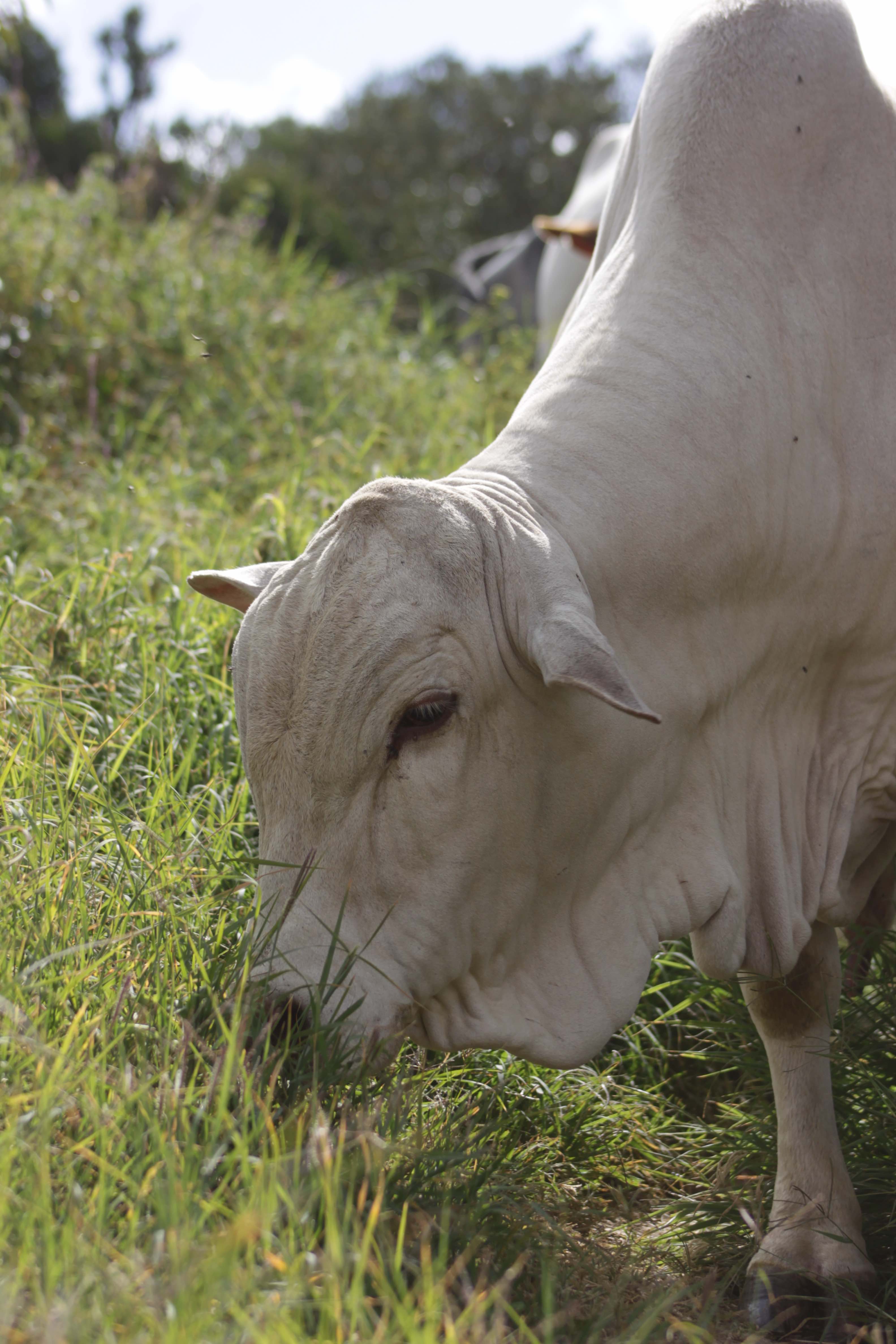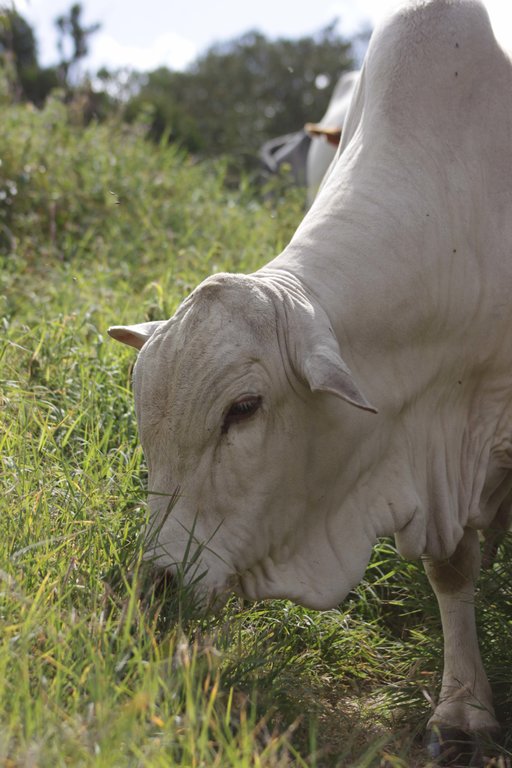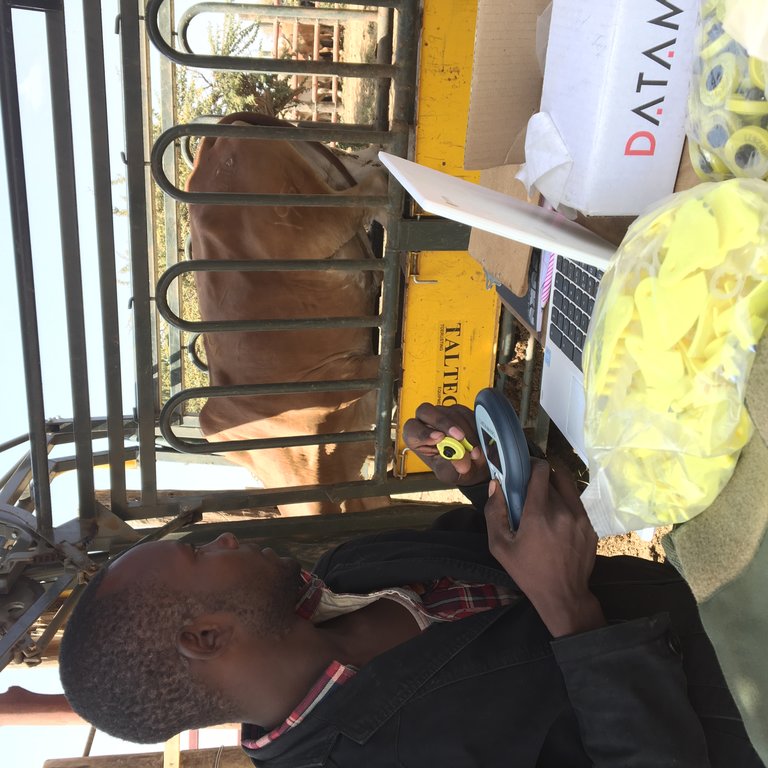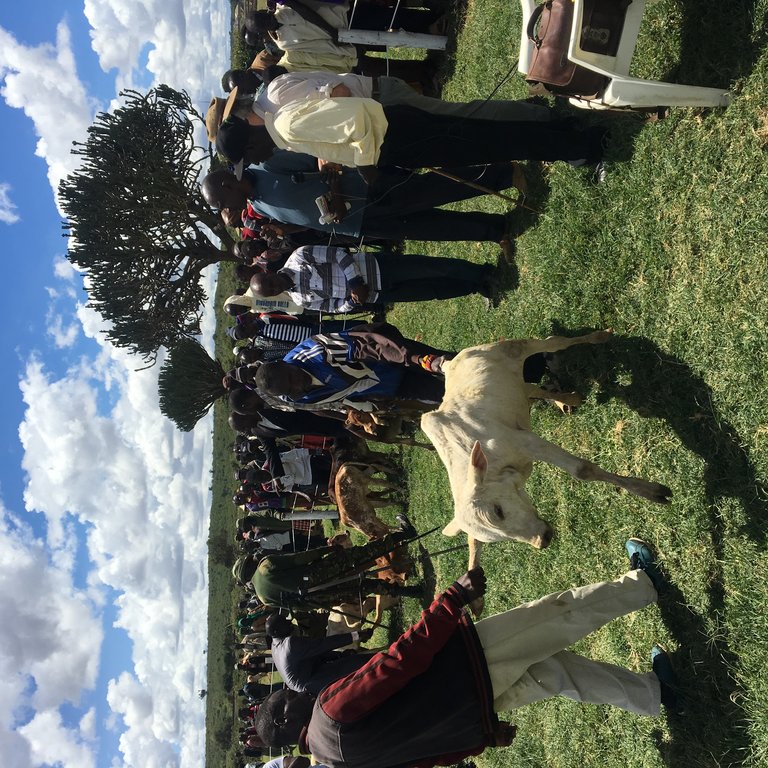Mugie Resource Sharing and Livestock to Markets Program [ເຄັນຢາ]
- ການສ້າງ:
- ປັບປູງ:
- ຜູ້ສັງລວມຂໍ້ມູນ: Peter Tyrrell
- ບັນນາທິການ: Henry Bailey
- ຜູ້ທົບທວນຄືນ: Hanspeter Liniger, Rima Mekdaschi Studer, Donia Mühlematter, Joana Eichenberger
Mugie Trading Stock (MTS)
approaches_3427 - ເຄັນຢາ
ເບິ່ງພາກສ່ວນ
ຂະຫຍາຍທັງໝົດ ຍຸບທັງໝົດ1. ຂໍ້ມູນທົ່ວໄປ
1.2 ລາຍລະອຽດ ການຕິດຕໍ່ ຂອງບຸກຄົນທີ່ຊັບພະຍາກອນ ແລະ ສະຖາບັນ ການມີສ່ວນຮ່ວມ ໃນການປະເມີນຜົນ ແລະ ເອກະສານ ຂອງວິທີທາງ
ບຸກຄົນສຳຄັນ (ຫຼາຍຄົນ)
ຜູ້ນໍາໃຊ້ທີ່ດິນ:
ເຄັນຢາ
ຊື່ຂອງໂຄງການ ທີ່ອໍານວຍຄວາມສະດວກ ໃນການສ້າງເອກກະສານ ຫຼື ປະເມີນດ້ານແນວທາງ (ຖ້າກ່ຽວຂ້ອງ)
Book project: Guidelines to Rangeland Management in Sub-Saharan Africa (Rangeland Management)1.3 ເງື່ອນໄຂ ຂອງການນໍາໃຊ້ເອກກະສານຂໍ້ມູນ ຂອງ WOCAT
ເມື່ອໃດທີ່ໄດ້ສັງລວມຂໍ້ມູນ (ຢູ່ພາກສະໜາມ)?
26/03/2018
ຜູ້ສັງລວມ ແລະ ບັນດາຜູ້ຕອບແບບສອບຖາມ ຍອມຮັບໃນເງື່ອນໄຂ ການນໍາໃຊ້ຂໍ້ມູນເອກະສານ ທີ່ສ້າງຂື້ນ ໂດຍຜ່ານ ອົງການ WOCAT:
ແມ່ນ
2. ພັນລະນາ ແນວທາງການຄຸ້ມຄອງນໍາໃຊ້ດິນແບບຍືນຍົງ
2.1 ການອະທິບາຍ ໂດຍຫຍໍ້ ຂອງວິທີທາງ
Selected livestock are bought from the communities, then fattened and marketed by the Mugie conservancy management on a ‘resource sharing’ basis – generating income for both the conservancy and the community. This encourages the development of local value chains and market-based incentives for better rangeland management and animal husbandry outside the conservancy area. Breeding, agricultural shows and on-going education in sustainable rangeland management provide support for the longer-term.
2.2 ການອະທິບາຍ ລາຍລະອຽດ ຂອງວິທີທາງ
ການອະທິບາຍ ລາຍລະອຽດ ຂອງວິທີທາງ:
Mugie conservancy is a private company covering nearly 20,000 hectares. It is involved in ecotourism, wildlife conservation and livestock production. Simultaneously, Mugie cooperates with community members surrounding the conservancy by fattening and marketing their cattle. Both parties share in the risks and successes of the initiative – and this is key to building trust. Community livestock owners ‘resource share’ in the program by supplying selected animals in line with standards and a quota stipulated by the conservancy. Currently the cattle are weighed and graded at the conservancy headquarters, but a purpose-built facility on the edge of the conservancy is being constructed for this purpose.
While the conservancy manages the livestock from the community, there is a joint stake in the livestock as the eventual profits are divided. The conservancy takes over full management of the livestock from the community members including herding and grazing, dipping, providing veterinary treatment, monitoring weight, marketing and sales. The division and remittance of funds generated is according to the contract agreed with the community committee. Contracts vary in nature and are often no more than just verbal agreements based on trust. The original owners have visiting rights on Saturdays during weighing and the spray-race, where they inspect their animals and interact with conservancy livestock staff.
The program aims to build value chains, encourage livestock businesses and the local economy through provision of a fair price market for local communities’ products. It also strives to build peace across communities and ethnicities - there is no room for fighting when talking business. Developing market-based incentives to produce better quality livestock is another aim, thus stimulating improved rangeland management and a higher standard of animal husbandry. It is also hoped to build a sustainable livestock business for the conservancy to pay for its wildlife and biodiversity conservation efforts - because conservation doesn’t pay for itself and tourism is volatile, and can’t cover conservations costs in most situations.
The total turnover of the program to-date (April 2018) is approx. US $ 825,000. The conservancy takes 10% of the sales, plus US $ 4.00 per animal per month to cover grazing, animal health and management. Cattle are sold live to various brokers and dealers, depending on the market conditions and the quality of the cattle.
This process of community participation and partnership building is nurtured and reinforced in various ways: (i) through continuous outdoor meetings (updates on changes needed to agreements; requirements for livestock; updating on conditions of the market; talking about the need to maintain a supply of high quality livestock through better rangeland management, etc.); (ii) by development of community committees; (iii) establishing community SACCOs (co-operatives registered with the county government); and (iv) drawing up contracts between the committees and the conservancy.
The implementation of this approach is an ongoing, dynamic and ever-evolving process. However the broad sequence is as follows: (i) introduction of the approach to communities, encouraging them to embrace the idea of improving livestock quality and to enter into an agreement with the conservancy, (ii) formation of committees within the community to ensure that livestock owners are heard and can agree the value of livestock, as well as avenues for communication, complaints and negotiations, (iii) negotiation of contracts with these committees, covering revenue sharing and proposed number of livestock involved, (iv) livestock management, fattening and marketing by Mugie conservancy, (v) continuous monitoring and reviews.
As implementation progresses there are also breeding schemes to introduce better genetic material into community livestock. These improved breeds produce cattle of higher quality for the beef market. Ongoing education and an annual agricultural show increase the potential and awareness of sustainable range management approaches and opportunities to all members of surrounding communities, including livestock producers: men, women and the youth.
2.3 ຮູບພາບຂອງແນວທາງ
2.5 ປະເທດ / ເຂດ / ສະຖານທີ່ບ່ອນທີ່ແນວທາງໄດ້ຖືກນໍາໃຊ້
ປະເທດ:
ເຄັນຢາ
ພາກພື້ນ / ລັດ / ແຂວງ:
Laikipia
ຂໍ້ມູນເພີ່ມເຕີມຂອງສະຖານທີ່:
Louniek region
2.6 ວັນທີເລີ່ມຕົ້ນ ແລະ ສິ້ນສຸດ ການຈັດຕັ້ງປະຕີບັດ ວິທີທາງ
ສະແດງປີຂອງການເລີ່ມຕົ້ນ:
2017
ຖ້າຫາກບໍ່ຮູ້ຈັກປີທີ່ແນ່ນອນ, ໃຫ້ປະມານຄາດຄະເນ ເອົາມື້ທີ່ໄດ້ເລີ່ມຈັດຕັ້ງປະຕິບັດ ວິທີທາງ:
ຕໍ່າກວ່າ 10 ປີ ຜ່ານມາ (ມາເຖິງປະຈຸບັນ)
2.7 ປະເພດຂອງແນວທາງ
- ການລິເລີ່ມ ພາຍໃນປະເທດ ທີ່ຜ່ານມາ / ນະວັດຕະກໍາ
2.8 ເປົ້າໝາຍ / ຈຸດປະສົງຫຼັກ ຂອງການຈັດຕັ້ງປະຕິບັດ ວິທີທາງ
1. Promote peace & stability
2. Incentivise and educate in sustainable rangeland management and use of natural resources
3. Provide local market opportunities
4. Encourage and educate in responsible livestock production in rural areas
5. Encourage local economic growth
6. Ensure sustainable food production
7. Encourage the formation of strong institutions in the area (such as co-operatives, businesses and business-orientated group ranches)
2.9 ເງື່ອນໄຂອໍານວຍ ຫຼື ຂັດຂວາງການປະຕິບັດຂອງເຕັກໂນໂລຢີ / ເຕັກໂນໂລຢີການນໍາໃຊ້ຕາມແນວທາງ
ສັງຄົມ / ວັດທະນະທໍາ / ມາດຕະຖານ ແລະ ຄຸນຄ່າທາງສາສະໜາ
- ອໍານວຍ
The use of traditional structures of elders is a great help in bringing members of local communities on board with the program, especially within the Pokot ethnic group.
- ເຊື່ອງຊ້ອນ
Traditional social structures amongst pastoralist communities are commonly collapsing, and therefore the prevailing social norm is for people to try to benefit themselves rather than helping the community at large. Moreover, traditional social structures are dominated by men. Most approaches target elders and warrior age sets to try and distribute knowledge of rangeland management and therefore they do not reach those actually doing the majority of animal husbandry work and having the greatest impact upon the rangelands and biodiversity - namely the women and children.
ມີຄວາມສາມາດ / ເຂັ້າເຖິງຊັບພະຍາກອນດ້ານການເງິນ ແລະ ການບໍລິການ
- ອໍານວຍ
There has been an initial boost in the area from some banking services to help communities open bank accounts, and encourage the formation of cooperatives. Using these institutions greatly reduces the burden of program administration.
- ເຊື່ອງຊ້ອນ
The majority of people in the area do not have local access to financial institutions. This creates a problem, as without the foundation of trust/insurance that financial services bring, facilitating sustainable trade, community members don't have the will or ability to invest in productive activities such as sustainable rangeland management and animal husbandry.
ກ່ຽວກັບກົດໝາຍ (ສິດນໍາໃຊ້ດິນ, ສິດນໍາໃຊ້ນໍ້າ)
- ເຊື່ອງຊ້ອນ
The sub-division of historical ranches in the area has been done on a scale that creates blocks that are too small (12-20 hectare plots) for sustainable livestock activities to be supported. Most of these do not have their own sources of water and this sub-division of the landscape means the greater area is not being managed to maintain essential ecosystem services such as the preservation of groundwater, soils, native forest or grassland biodiversity.
ນະໂຍບາຍ
- ອໍານວຍ
The 'Amaya Initiative' that has been set up by the current Governor of Laikipia to boost cooperation between between regional county governments has had initial successes in assisting the project through increased security and encouraging peace and stability. It has yet to provide other enabling functions such as control of cattle movement to prevent disease, encouraging/facilitating markets, etc.
ການປົກຄອງທີ່ດິນ (ການຕັດສິນໃຈ, ການປະຕິບັດ ແລະ ຂໍ້ບັງຄັບ)
- ເຊື່ອງຊ້ອນ
The lack of law enforcement controlling the movement of livestock hinders efforts to implement value adding techniques and approaches in sustainable rangeland management and associated livestock management approaches through disease, livestock theft, and unregulated utilisation of natural resources. The lack of enforcement of laws supporting the rights of landowners and businesses discourages investment on any scale. The penalties for transgressing some of these laws are also very weak and not commensurate with the risks that their breaches pose to landowners.
ຄວາມຮູ້ກ່ຽວກັບການຄຸ້ມຄອງ ທີ່ດິນແບບຍືນຍົງ, ການເຂົ້າເຖິງການສະໜັບສະໜູນ ທາງດ້ານວິຊາການ
- ເຊື່ອງຊ້ອນ
The basic understanding of lifecycles of common wild fodder plants is lacking. This means that the majority of community led initiatives to manage natural resources and mitigate against climate based crises cause more harm to sustainable land management efforts in the medium to long term.
ຕະຫຼາດ (ໃນການຊື້ວັດຖຸດິບ, ຂາຍຜະລິດຕະພັນ) ແລະ ລາຄາ
- ເຊື່ອງຊ້ອນ
Poor market access makes it difficult to sustain the program across all the potential revenue situations. There are good markets for well-finished livestock. However, culled cows, for instance, cannot be sold - and these continue to drain resources, both financial and natural. Institutions with large contracts that could provide offtake for such animals do not offer market prices that are sustainable for local businesses. The development of local infrastructure in marketing inputs (medicines, feeds, supplements, extension services, etc.), and value chain addition (slaughter houses, canning factories, cold chain storage, etc.) would help break apparent monopolies that seem to be retarding local markets.
ວຽກ, ມີກໍາລັງຄົນ
- ເຊື່ອງຊ້ອນ
There is a lack of availability of manpower with the correct skills and training in administration and management and with an understanding and willingness to work in the agricultural sector.
ອື່ນໆ
- ເຊື່ອງຊ້ອນ
Availability of seed funds to encourage entrepreneurship and development of local businesses. Most funds seem to be channelled through NGOs who have an aversion to partnership in commercial ventures. Many training sessions that are run by NGOs in surrounding pastoralist areas, when discussing potential stakeholders, rarely mention local businesses. This serves to develop societies and communities reliant on handouts, unwilling to develop their local value chains. The prevailing NGO, development and aid attitude that avoids large for-profit businesses needs to change. Such businesses can be a lynchpin in regional value chains that encourage sustainable approaches, as they guarantee local supply chains and local customer bases, raising local economies, peace and strong institutions.
3. ການມີສ່ວນຮ່ວມ ແລະ ບົດບາດຂອງພາກສ່ວນທີ່ກ່ຽວຂ້ອງທີ່ໄດ້ມີສ່ວນຮ່ວມ
3.1 ຜູ້ມີສ່ວນຮ່ວມ ໃນວິທີທາງ ແລະ ພາລະບົດບາດ ຂອງເຂົາເຈົ້າ
- ຜູ້ນໍາໃຊ້ດິນໃນທ້ອງຖິ່ນ / ຊຸມຊົນທ້ອງຖິ່ນ
Land and livestock owners from the immediate area surrounding the private conservancy (from the Pokot, Samburu & Turkana tribes).
Local land users/communities make committees to allocate quotas of livestock to come in to the MTS resource sharing and livestock-to-market program. It is also their responsibility to continue to bring suitable animals for the program. The committees are those to communicate changes and updates to the terms of agreement to the wider community and to help mediate in disputes.
- ອົງການຈັດຕັ້ງ ພາຍໃນຊຸມຊົນ
Chemiot SACCO - a Pokot youth cooperative set up in the wake of starting the MTS scheme.
Mugie wishes to encourage the development of strong institutions in the area. Mugie hopes increasingly to deal with SACCOs as opposed to committees.
- ຜູ້ຊ່ຽວຊານ ການນຄຸ້ມຄອງ ທີ່ດິນແບບຍືນຍົງ / ທີ່ປຶກສາດ້ານກະສິກໍາ
RPLRP (Regional Pastoralist Livelihoods Resilience Program) and NDMA (National Drought Management Authority).
Currently, these stakeholders have shown an interest in the project and wish to see how it can be scaled up.
- ນັກຄົ້ນຄວ້າ
Masters and Doctorate students
There has been a little interest from these stakeholders in using the information and databases developed by Mugie. However there has been no feedback and little uptake from them.
- ພາກເອກະຊົນ
Mugie Conservancy, various Mugie Trade partners.
To manage the livestock, to finish (fatten) them for the market, market the livestock, remit funds from sales, manage the contracts, provide education on improved rangeland management and animal husbandry. Trade partners provide other inputs and access to markets.
- ອໍານາດ ການປົກຄອງທ້ອງຖິ່ນ
Laikipia County Government, Samburu County Government, Baringo County Government
The respective county governments have shown interest in supporting and further developing the MTS program in order to help develop strong institutions, economy, businesses opportunities and rehabilitate rangelands for better livelihoods in the Amaya Triangle area.
ຖ້າຫາກມີຫຼາຍພາກສ່ວນທີ່ເຂົ້າຮ່ວມ ໃຫ້ລະບຸ ອົງການທີ່ເປັນຫຼັກ ໃນການຈັດຕັ້ງປະຕິບັດ:
Mugie Conservancy
3.2 ການມີສ່ວນຮ່ວມຂອງຜູ້ນໍາໃຊ້ທີ່ດິນໃນທ້ອງຖິ່ນ / ຊຸມຊົນທ້ອງຖິ່ນໃນໄລຍະທີ່ແຕກຕ່າງກັນຂອງແນວທາງ
| ການລວບລວມ ເອົາຜູ້ນໍາໃຊ້ດິນ ໃນທ້ອງຖິ່ນ / ຊຸມຊົນທ້ອງຖິ່ນ | ໃຫ້ລະບຸ ຜູ້ໃດທີ່ມີສ່ວນຮ່ວມ ໃນແຕ່ລະກິດຈະກໍາ? | |
|---|---|---|
| ການເລີ່ມຕົ້ນ / ແຮງຈູງໃຈ | ການຮ່ວມມື | Both Mugie conservancy and local land users were involved in negotiations over the period of conflict around the 2017 Kenya presidential elections - out of this innovative resource sharing approaches were developed to benefit all stakeholders. |
| ການວາງແຜນ | ການຮ່ວມມື | Community leaders were presented with the options and limitations by Mugie management. Committees were then formed under several different themes, and they then negotiated contracts. |
| ການປະຕິບັດ | ການຮ່ວມມື | Community committees continue to be the main point of contact as the program develops organically, balancing the market, environment and needs of various stakeholders. However, the main implementer continues to be Mugie but with integrated community support. Changes in the market are seeing more individual community members using the scheme to market livestock themselves without Mugie involvement, but using the reputation of the brand. |
| ຕິດຕາມກວດກາ / ການປະເມີນຜົນ | ການຮ່ວມມື | Communities raise problems that occur and work hand in hand with Mugie management to resolve issues. |
3.4 ການຕັດສິນໃຈກ່ຽວກັບການຄັດເລືອກເຕັກໂນໂລຢີຂອງການຄຸ້ມຄອງທີ່ດິນແບບຍືນຍົງ / ເຕັກໂນໂລຢີ
ລະບຸ ຄົນທີ່ຕັດສິນໃຈ ກ່ຽວກັບການຄັດເລືອກຂອງ ເຕັກໂນໂລຢີ / ເຕັກໂນໂລຢີ ຈະໄດ້ຮັບການປະຕິບັດ:
- ຜູ້ຊ່ຽວຊານ ຫຼັກດ້ານການຄຸ້ມຄອງ ທີ່ດິນແບບຍືນຍົງ, ມີການຕິດຕາມປຶກສາຫາລືກັບຜູ້ນໍາໃຊ້ທີ່ດິນ
ອະທິບາຍ:
Mugie handles the administration of the program and therefore decides on what technologies best fit their management requirements. Communities are always consulted on all changes and developments of the program.
Specify on what basis decisions were made:
- ປະເມີນເອກກະສານ ຄວາມຮູ້ກ່ຽວກັບ ການຄຸ້ມຄອງ ທີ່ດິນແບບຍືນຍົງ (ຫຼັກຖານທີ່ຊ່ວຍໃນການຕັດສິນໃຈ)
- ຜົນທີ່ໄດ້ຮັບ ຈາກການຄົ້ນຄວ້າ
- ປະສົບການສ່ວນບຸກຄົນ ແລະ ຄວາມຄິດເຫັນ (ທີ່ບໍ່ເປັນເອກກະສານ)
4. ການສະໜັບສະໜູນທາງດ້ານວິຊາການ, ການສ້າງຄວາມສາມາດ, ແລະ ການຈັດການຄວາມຮູ້.
4.1 ການສ້າງຄວາມສາມາດ / ການຝຶກອົບຮົມ
ຜູ້ນໍາໃຊ້ທີ່ດິນ ຫຼື ພາກສ່ວນກ່ຽວຂ້ອງອື່ນໆ ໄດ້ຮັບການຝຶກອົບຮົມບໍ່?
ແມ່ນ
ໃຫ້ລະບຸ ຜູ້ໃດທີ່ໄດ້ຮັບການຝຶກອົບຮົມ:
- ຜູ້ນໍາໃຊ້ດິນ
- ພະນັກງານພາກສະໜາມ / ທີ່ປຶກສາ
ຮູບແບບຂອງການຝຶກອົບຮົມ:
- ການເຮັດຕົວຈິງ
- ຕົວຕໍ່ຕົວ
- ເນື້ອທີ່ສວນທົດລອງ
- ກອງປະຊຸມ
ໃນຫົວຂໍ້:
Grazing management, rangeland management (planning), Lifecycles of plants, water cycling, solar cycling, mineral cycling, importance of suitable breeds, market awareness, forming (SACCO), Basic business planning.
4.2 ການບໍລິການໃຫ້ຄໍາປຶກສາ
ເຮັດຜູ້ໃຊ້ທີ່ດິນມີການເຂົ້າເຖິງການບໍລິການໃຫ້ຄໍາປຶກສາ?
ບໍ່ແມ່ນ
4.3 ສະຖາບັນການສ້າງຄວາມເຂັ້ມແຂງ (ການພັດທະນາອົງການຈັດຕັ້ງ)
ສະຖາບັນ ໄດ້ຮັບການສ້າງຕັ້ງຂື້ນ ຫຼື ໄດ້ຮັບການສ້າງຄວາມເຂັ້ມແຂງ ໂດຍການຈັດຕັ້ງປະຕິບັດ ວິທີທາງບໍ່?
- ມີ, ພໍສົມຄວນ
ລະບຸ ທາງສະຖາບັນ ໄດ້ສ້າງຄວາມເຂັ້ມແຂງ ໃນລະດັບໃດ (ຫຼາຍ):
- ທ້ອງຖິ່ນ
- ລະດັບພາກພື້ນ
ອະທິບາຍ ສະຖາບັນການຈັດຕັ້ງ, ພາລະບົດບາດ ແລະ ໜ້າທີ່ຮັບຜິດຊອບ, ສະມາຊິກ ແລະ ອື່ນໆ.
Cooperatives (SACCOs), Community Conservancies, Local businesses.
ລະບຸ ປະເພດ ຂອງສະໜັບສະໜູນ:
- ການສ້າງຄວາມອາດສາມາດ / ການຝຶກອົບຮົມ
4.4 ຕິດຕາມກວດກາ ແລະ ປະເມີນຜົນ
ການຈັດຕັ້ງປະຕິບັດ ວິທີທາງ ໄດ້ມີການປະເມີນຜົນ ແລະ ຕິດຕາມບໍ?
ແມ່ນ
ຖ້າແມ່ນ, ເອກກະສານສະບັບນີ້ ແມ່ນໄດ້ນໍາໃຊ້ເຂົ້າໃນການຕິດຕາມ ແລະ ປະເມີນຜົນບໍ່?
ແມ່ນ
4.5 ການຄົ້ນຄວ້າ
ນີ້້ແມ່ນສ່ວນໜຶ່ງ ການຄົ້ນຄວ້າ ຂອງວິທີທາງບໍ່?
ແມ່ນ
ລະບຸ ຫົວຂໍ້:
- ສັງຄົມ
- ເສດຖະສາດ / ການຕະຫຼາດ
- ລະບົບນິເວດ
- ເຕັກໂນໂລຢີ
ໃຫ້ຂໍ້ມູນ ເພີ່ມເຕີມ ແລະ ກໍານົດ ຜູ້ໃດເຮັດການຄົ້ນຄວ້າ:
Project developers from Mugie.
5. ການສະໜັບສະໜູນທາງດ້ານການເງິນ ແລະ ອຸປະກອນຈາກພາຍນອກ
5.1 ງົບປະມານປະຈໍາປີ ສໍາລັບວິທີທາງ ຂອງການຄຸ້ມຄອງ ທີ່ດິນແບບຍືນຍົງ
ຖ້າຫາກບໍ່ຮູ້ຈັດງົບປະມານທີ່ແນ່ນອນ ແມ່ນໃຫ້ປະມານເອົາ:
- 2,000-10,000
ຄໍາເຫັນ (ຕົວຢ່າງ: ແຫຼ່ງຂໍ້ມູນຫຼັກ ຂອງການສະໜອງທຶນ / ຜູ້ໃຫ້ທຶນທີ່ສໍາຄັນ):
All funding presently from Mugie. The program could be greatly improved with outside funding, donations or support.
5.2 ການສະໜັບສະໜູນ ທາງດ້ານການເງິນ / ອຸປະກອນ ສະໜອງໃຫ້ແກ່ຜູ້ນໍາທີ່ດິນ
ຜູ້ນໍາໃຊ້ດິນ ໄດ້ຮັບການສະໜັບສະໜູນ ທາງດ້ານ ການເງິນ / ອຸປະກອນ ໃນການຈັດຕັ້ງປະຕິບັດ ເຕັກໂນໂລຢີບໍ?
ບໍ່ແມ່ນ
5.3 ເງິນສົມທົບສໍາລັບການນໍາໃຊ້ສະເພາະປັດໃຈຂາເຂົ້າໃນການຜະລີດກະສິກໍາ (ລວມທັງແຮງງານ)
- ອຸປະກອນ
| ໃຫ້ລະບຸໄດ້ຮັບການສະໜັບສະໜູນປັດໃຈຂາເຂົ້າຫຍັງແດ່ | ທີ່ຂອບເຂດ | ລະບຸ ການອຸດໜູນ |
|---|---|---|
| ເຄື່ອງມື | ງົບປະມານບາງສ່ວນ | Microchipping for Electronic identification of cattle from Kenya Vetinary Association (KVA) |
ຖ້າແຮງງານ ຂອງຜູ້ນໍາໃຊ້ດິນ ໄດ້ຮັບການສະໜັບສະໜູນ ປັດໃຈຂາເຂົ້າ, ແມ່ນບໍ່:
- ການອາສາ
5.4 ສິນເຊື່ອ
ໄດ້ປ່ອຍສິນເຊື່ອ ສະໜອງໃຫ້ພາຍໃຕ້ ວິທີການສໍາລັບກິດຈະກໍາ ການຄຸ້ມຄອງ ທີ່ດິນແບບຍືນນຍົງບໍ່?
ບໍ່ແມ່ນ
5.5 ສິ່ງຈູງໃຈ ຫຼື ເຄື່ອງມືອື່ນໆ
ການສົ່ງເສີມ ຈັດຕັ້ງປະຕິບັດ ເຕັກໂນໂລຢີ ໃນການຄຸ້ມຄອງ ດິນແບບຍືນຍົງ ໄດ້ສະໜອງສິ່ງກະຕຸກຊຸກຍູ້ບໍ່?
ບໍ່ແມ່ນ
6. ວິເຄາະຜົນກະທົບ ແລະ ສັງລວມບັນຫາ
6.1 ຜົນກະທົບຂອງແນວທາງ
ວິທີທາງ ຊ່ວຍຊຸກຍູ້ ຜູ້ນຳໃຊ້ທີ່ດິນທ້ອງຖີ່ນ, ໃນການປັບປຸງ ການມີສ່ວນຮ່ວມ ຂອງຜູ້ທີ່ກ່ຽວຂ້ອງ ບໍ່?
- ບໍ່
- ມີ, ໜ້ອຍໜຶ່ງ
- ມີ, ພໍສົມຄວນ
- ມີ, ຫຼາຍ
Local landowners have a financial market based incentive to protect the main conservation area and increase/explore rehabilitation efforts on their own land.
ການນໍາໃຊ້ ວິທີທາງ ດັ່ງກ່າວນີ້ ສາມາດເປັນຫຼັກຖານ ທີ່ສະໜັບສະໜູນ ໃຫ້ການຕັດສິນໃຈໄດ້ບໍ່?
- ບໍ່
- ມີ, ໜ້ອຍໜຶ່ງ
- ມີ, ພໍສົມຄວນ
- ມີ, ຫຼາຍ
Detailed records were kept from the beginning and consulted as evidence for changes to the approach as the program developed
ການຈັດຕັ້ງປະຕິບັດ ວິທີທາງ ສາມາດຊ່ວຍຜູ້ນໍາໃຊ້ທີ່ດິນ ໃນການຈັດຕັ້ງປະຕິບັດ ແລະ ບໍາລຸງຮັກສາ ເຕັກໂນໂລຢີ ການຄຸ້ມຄອງ ທີ່ດິນແບບຍືນຍົງໄດ້ບໍ?
- ບໍ່
- ມີ, ໜ້ອຍໜຶ່ງ
- ມີ, ພໍສົມຄວນ
- ມີ, ຫຼາຍ
The program is still relatively new - but there has been strong evidence of changing attitudes towards better rangeland management.
ການນໍາໃຊ້ ວິທີທາງ ສາມາດປັບປຸງ ການປະສານງານ ແລະ ຄ່າໃຊ້ຈ່າຍ ການຈັດຕັ້ງປະຕິບັດ ທີ່ມີປະສິດທິພາບ ຂອງການຄຸ້ມຄອງ ທີ່ດິນແບບຍືດຍົງໄດ້ບໍ່?
- ບໍ່
- ມີ, ໜ້ອຍໜຶ່ງ
- ມີ, ພໍສົມຄວນ
- ມີ, ຫຼາຍ
The proper management of cattle is helping to manage grasses and reduce the burden on overgrazed areas within the landscape.
ການນໍາໃຊ້ ວິທີທາງ ສາມາດລະດົມ ຫຼື ປັບປຸງ ການເຂົ້າເຖິງຊັບພະຍາກອນ ການເງິນ ສໍາລັບການຈັດຕັ້ງປະຕິບັດ ການຄຸ້ມຄອງ ທີ່ດິນແບບຍືດຍົງໄດ້ບໍ່?
- ບໍ່
- ມີ, ໜ້ອຍໜຶ່ງ
- ມີ, ພໍສົມຄວນ
- ມີ, ຫຼາຍ
Funding for this has yet to be provided for the area.
ການນໍາໃຊ້ ວິທີທາງ ສາມາດປັບປຸງຄວາມຮູ້ ແລະ ຄວາມສາມາດຂອງຜູ້ນໍາໃຊ້ທີ່ດິນ ໃນການປະຕິບັດ ການຄຸ້ມຄອງ ທີ່ດິນແບບຍືດຍົງໄດ້ບໍ່?
- ບໍ່
- ມີ, ໜ້ອຍໜຶ່ງ
- ມີ, ພໍສົມຄວນ
- ມີ, ຫຼາຍ
Considerable training has been carried out and discussions have been held with all of the communities surrounding the main conservation area of Mugie, greatly increasing their knowledge - capacity however relies upon security, access to market incentive to implement SLM and above all security of resources and land tenure.
ການນໍາໃຊ້ ວິທີທາງ ສາມາດປັບປຸງຄວາມຮູ້ ແລະ ຄວາມສາມາດ ຂອງພາກສ່ວນທີ່ກ່ຽວຂ້ອງໄດ້ບໍ່?
- ບໍ່
- ມີ, ໜ້ອຍໜຶ່ງ
- ມີ, ພໍສົມຄວນ
- ມີ, ຫຼາຍ
Training of, and discussions with, other stakeholders have taken place too, raising wider awareness of the major issues and driving causes of rangeland degradation in the area.
ການນໍາໃຊ້ ວິທີທາງ ສາມາດສ້າງຄວາມເຂັ້ມແຂງ ໃຫ້ສະຖາບັນການຈັດຕັ້ງ, ການຮ່ວມມື ລະຫວ່າງພາກສ່ວນທີ່ກ່ຽວຂ້ອງບໍ່?
- ບໍ່
- ມີ, ໜ້ອຍໜຶ່ງ
- ມີ, ພໍສົມຄວນ
- ມີ, ຫຼາຍ
Yes, and continues to do so. The approach shows and provides a framework for further cooperation in economic development, peace building and education as well as sustainable land management and safeguarding of biodiversity.
ການນໍາໃຊ້ ວິທີທາງ ສາມາດຫຼຸດຜ່ອນ ຂໍ້ຂັດແຍ່ງໄດ້ບໍ່?
- ບໍ່
- ມີ, ໜ້ອຍໜຶ່ງ
- ມີ, ພໍສົມຄວນ
- ມີ, ຫຼາຍ
It has led to great stability in the area and opened up lines of dialogues between different communities, ethnicities, areas, and local government.
ການຈັດຕັ້ງປະຕິບັດ ວິທີທາງ ສາມາດສ້າງຄວາມເຂັ້ມແຂງ ທາງສັງຄົມ ແລະ ເສດຖະກິດບໍ່?
- ບໍ່
- ມີ, ໜ້ອຍໜຶ່ງ
- ມີ, ພໍສົມຄວນ
- ມີ, ຫຼາຍ
The approach has allowed socially and economically disadvantaged groups to benefit from the administration and financial services from Mugie Conservancy and has enabled investments that have shown as much as 37% return on investments for socially and economically disadvantaged groups that otherwise would never have happened.
ການຈັດຕັ້ງປະຕິບັດ ວິທີທາງ ສາມາດປັບປຸງ ຄວາມສະເໜີພາບ ຂອງບົດບາດ ຍິງຊາຍ ແລະ ສ້າງຄວາມເຂັ້ມແຂງໃຫ້ຜູ້ຍິງໄດ້ບໍ່?
- ບໍ່
- ມີ, ໜ້ອຍໜຶ່ງ
- ມີ, ພໍສົມຄວນ
- ມີ, ຫຼາຍ
Although this impact has been small, now that trust with communities has been built, further resource sharing products are being developed within the approach to target these groups specifically.
ການຈັດຕັ້ງປະຕິບັດ ວິທີທາງ ສາມາດຊຸກຍູ້ ຜູ້ນໍາໃຊ້ທີ່ດິນທີ່ເປັນຊາວໜຸ່ມ / ຄົນລຸ້ນໃໝ່ ໃນການຄຸ້ມຄອງ ທີ່ດິນແບບຍືນຍົງໄດ້ບໍ?
- ບໍ່
- ມີ, ໜ້ອຍໜຶ່ງ
- ມີ, ພໍສົມຄວນ
- ມີ, ຫຼາຍ
The Mugie Rangeland and Pastoralist Show (an agricultural show for pastoralists) welcomes all the family and makes them aware of the issues and potential for change through SLM technologies and approaches.
ການຈັດຕັ້ງປະຕິບັດ ວິທີທາງ ສາມາດປັບປຸງ ປະເດັນການຖືຄອງທີ່ດິນ / ສິດທິໃນການນໍາໃຊ້ທີ່ດິນ ທີ່ເຊື່ອງຊ້ອນໃນການຈັດຕັ້ງປະຕິບັດ ເຕັກໂນໂລຢີ ການຄຸ້ມຄອງ ທີ່ດິນແບບຍືນຍົງໄດ້ບໍ?
- ບໍ່
- ມີ, ໜ້ອຍໜຶ່ງ
- ມີ, ພໍສົມຄວນ
- ມີ, ຫຼາຍ
This lies within the government's power to change. However, there is a lack of understanding of what the problem actually is, even from local and national government.
ການນໍາໃຊ້ ວິທີທາງ ໄດ້ປັບປຸງ ການຄໍ້າປະກັນສະບຽງອາຫານ ຫຼື ປັບປຸງໂຄສະນາການໄດ້ບໍ່?
- ບໍ່
- ມີ, ໜ້ອຍໜຶ່ງ
- ມີ, ພໍສົມຄວນ
- ມີ, ຫຼາຍ
ການຈັດຕັ້ງປະຕິບັດ ວິທີທາງ ສາມາດປັບປຸງ ການເຂົ້າເຖິງຕະຫຼາດໄດ້ບໍ?
- ບໍ່
- ມີ, ໜ້ອຍໜຶ່ງ
- ມີ, ພໍສົມຄວນ
- ມີ, ຫຼາຍ
ການນໍາໃຊ້ ວິທີທາງ ໄດ້ປັບປຸງ ການເຂົ້າເຖິງນໍ້າ ແລະ ສາຂາພິບານໄດ້ບໍ່?
- ບໍ່
- ມີ, ໜ້ອຍໜຶ່ງ
- ມີ, ພໍສົມຄວນ
- ມີ, ຫຼາຍ
Not yet, but as the approach goes forward. Those participating from more affluent social groups will be charged a premium. This will be used for extension services that improve these areas. Education is being given around the potential for communities to develop their own local water cooperatives.
ການຈັດຕັ້ງປະຕິບັດ ວິທີທາງ ສາມາດສ້າງຄວາມອາດສາມາດໃຫ້ຜູ້ນໍາໃຊ້ດິນ ໃນການປັບຕົວ ຕໍ່ການປ່ຽນແປງດິນຟ້າອາກາດ / ຫຼດຜ່ອນຄວາມສ່ຽງທາງໄພພິບັດໄດ້ບໍ? :
- ບໍ່
- ມີ, ໜ້ອຍໜຶ່ງ
- ມີ, ພໍສົມຄວນ
- ມີ, ຫຼາຍ
By providing basic financial services, land users can start guaranteeing funds and plans available for climate related disasters. The education and knowledge being provided also increases this capacity, and the off take of animals to finish on managed rangeland for market provides resilience all year round regardless of drought.
ການນໍາໃຊ້ ວິທີທາງ ໄດ້ປັບປຸງ ການຈ້າງງານ, ໂອກາດ ໃນການສ້າງລາຍຮັບບໍ່?
- ບໍ່
- ມີ, ໜ້ອຍໜຶ່ງ
- ມີ, ພໍສົມຄວນ
- ມີ, ຫຼາຍ
There has been a huge injection of funds into the area through this approach. Employment has also increased through the scheme and can continue to do so as it grows.
6.2 ແຮງຈູງໃຈຫຼັກຂອງຜູ້ນໍາໃຊ້ທີ່ດິນໃນການປະຕິບັດການຄຸ້ມຄອງທີ່ດິນແບບຍືນຍົງ
- ການຜະລິດເພີ່ມຂຶ້ນ
- ກໍາໄລເພີ່ມຂຶ້ນ (ຄວາມສາມາດ), ການປັບປຸງຄ່າໃຊ້ຈ່າຍ, ຜົນປະໂຫຍດ, ອັດຕາສ່ວນ
- ຫຼຸດຜ່ອນດິນເຊື່ອມໂຊມ
- ຫຼຸດຜ່ອນຄວາມສ່ຽງຂອງໄພພິບັດ
- ກຽດສັກສີ, ຄວາມກົດດັນທາງສັງຄົມ / ການຕິດຕໍ່ກັນທາງສັງຄົມ
- ການປັບປຸງ ຄວາມຮູ້ ແລະ ຄວາມສາມາດ ຂອງການຄຸ້ມຄອງ ທີ່ດິນແບບຍືນຍົງ
- ການປັບປຸງຄວາມງົດງາມ
- ການຫຼຸດຜ່ອນຂໍ້ຂັດແຍ່ງ
6.3 ຄວາມຍືນຍົງຂອງກິດຈະກໍາວິທີທາງ
ຜູ້ນໍາໃຊ້ ທີ່ດິນ ສາມາດສືບຕໍ່ ການຈັດຕັ້ງປະຕິບັດ ຜ່ານວິທີທາງໄດ້ບໍ່ (ໂດຍປາດສະຈາກ ການຊ່ວຍເຫຼືອ ຈາກພາກສ່ວນພາຍນອກ)?
- ບໍ່ແນ່ນອນ
ຖ້າ ບໍ່ ຫຼື ບໍ່ແນ່ໃຈ, ໃຫ້ອະທິບາຍ ແລະ ຄໍາເຫັນ:
At the time of writing the approach is still less than a year old and this remains to be seen.
6.4 ຈຸດແຂງ / ຂໍ້ດີ ຂອງວິທີທາງ
| ຈຸດແຂງ / ຂໍ້ດີ / ໂອກາດໃນການນໍາໃຊ້ທີ່ດິນ |
|---|
| Benefits from the increase in the value of cattle. Few other livestock programs achieve this. |
| It has created peace in the area. |
| There are now opportunities for business growth opening up in the area. |
| ຈຸດແຂງ / ຈຸດດີ / ໂອກາດ ຈາກທັດສະນະຂອງຜູ້ປ້ອນຂໍ້ມູນ ຫຼື ບຸກຄົນສຳຄັນ |
|---|
| This is a key stepping stone in creating resilience in the area and rehabilitating degraded land through the financial market based incentives provided through the approach. |
| The approach has provided the necessary financial services and a sustainable road map forward to alleviate poverty through the changing of local attitudes from a wealth based society where the tragedy of the commons is degrading landscapes and societal structures, into a cash based society with strong institutions, a sustainable way of life and future. |
| Increase in peace and stability can further provide an incentive for local land users to invest in SLM practices and the return of biodiversity. |
6.5 ຈຸດອ່ອນ / ຂໍ້ເສຍຂອງແນວທາງ ແລະ ວິທີການແກ້ໄຂໃຫ້ເຂົາເຈົ້າ
| ຈຸດອ່ອນ / ຂໍ້ເສຍ / ຄວາມສ່ຽງໃນມູມມອງຂອງຜູ້ນໍາໃຊ້ທີ່ດິນ | ມີວິທີການແກ້ໄຂຄືແນວໃດ? |
|---|---|
| Changeability of the market and lack of guaranteed prices. | Further banding together to guarantee good products (livestock) dependent upon sustainable rangeland management and agreed contracts with wholesalers. |
| Still a lack of good rangeland outside of the main conservation area of Mugie | Further increase stability and peace in the area and develop cooperatives of landowners who can rehabilitate and manage their land sustainably using economies of scale. This requires further guarantees of the markets and their products. |
| ຈຸດອ່ອນ ຫຼື ຂໍ້ເສຍ ຫຼື ຄວາມສ່ຽງ ໃນມຸມມອງຂອງ ຜູ້ສັງລວມຂໍ້ມູນ ຫຼື ບັນດາຜູ້ຕອບແບບສອບຖາມ | ມີວິທີການແກ້ໄຂຄືແນວໃດ? |
|---|---|
| Administrative burden is huge and might prevent replication of the approach to organisations without a body of well-educated staff. | Development of a resource sharing management application (App). |
| Corruption in the markets and with large-scale contracts for livestock products |
7. ເອກກະສານອ້າງອີງ ແລະ ຂໍ້ມູນການເຊື່ອມໂຍງ
7.1 ວິທີການ / ແຫຼ່ງຂໍ້ມູນ
- ການໄປຢ້ຽມຢາມພາກສະໜາມ, ການສໍາຫຼວດພາກສະໜາມ
4
- ການສໍາພາດ ຜູ້ນໍາໃຊ້ທີ່ດິນ
Several hundred
- ສໍາພາດ ຊ່ຽວຊານ ການຄຸ້ມຄອງ ດິນແບບຍືນຍົງ
- ການລວບລວມ ບົດລາຍງານ ແລະ ເອກະສານອື່ນໆ ທີ່ມີຢູ່ແລ້ວ
ຂໍ້ມູນການເຊື່ອມຕໍ່ ແລະ ເນື້ອໃນ
ຂະຫຍາຍທັງໝົດ ຍຸບທັງໝົດການເຊື່ອມຕໍ່
ບໍ່ມີຂໍ້ມູນການເຊື່ອມຕໍ່
ເນື້ອໃນ
ບໍ່ມີເນື້ອໃນ





